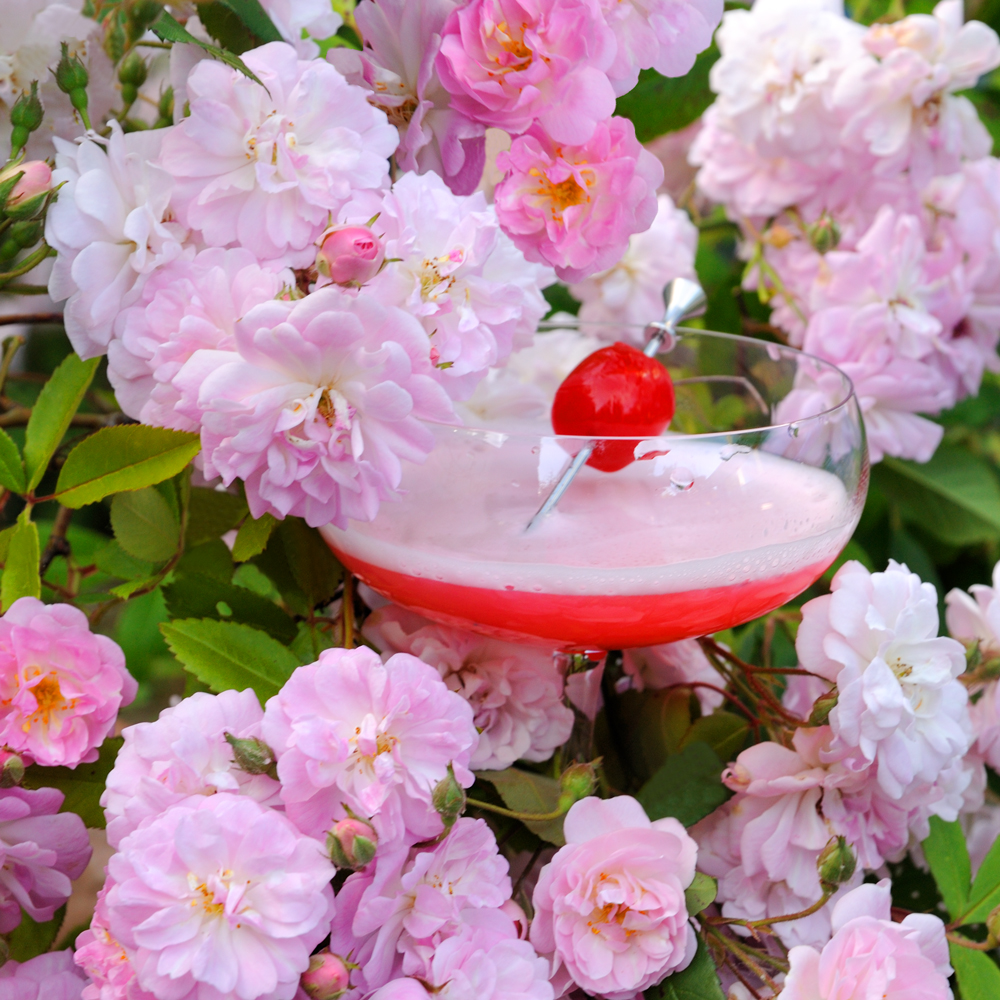
Let’s add one more lady to the colorful collection. We already have the White Lady and Blue Lady, and now it’s time for the Pink Lady.
The Pink Lady recipe was first published in 1913 in the iconic Jacques Straub’s book, *Manual of Mixed Drinks*. The recipe called for equal parts gin, apple brandy (Applejack), and lemon juice, along with a small amount of grenadine to give the cocktail its distinctive pink hue.
We don’t know the cocktail’s creator for certain, but it’s widely believed to be Elsie de Wolfe, the American actress and interior designer. She was one of the founders of modern design and the first professional—and highly sought-after—female interior designer in the U.S. With her many talents and wide social reach, it wouldn’t be surprising if she were also the creator of this popular cocktail.
Another theory suggests the cocktail was named after American actress Hazel Dawn, who gained fame as the lead in Ivan Caryll’s musical comedy *The Pink Lady*. The show was a huge success, running for over 300 performances on Broadway. Despite many other successful roles, Hazel Dawn remained best known as the “Pink Lady.”
The Pink Lady cocktail was especially popular during the Prohibition era. The combination of grenadine and lemon juice worked wonders in masking the harsh taste of the low-quality gin that was common at the time. As the cocktail’s popularity grew, its composition saw a few changes.
In Harry Craddock’s classic *The Savoy Cocktail Book* (1930), Applejack disappeared from the recipe, likely due to the difficulty in importing it from Prohibition-era America. In its place, egg white was introduced, making the cocktail smoother and more refined. Later, Applejack made its return, but the addition of egg white remained, adding a new layer of texture and sophistication to the drink.
During the 1930s to 1950s in the U.S., the Pink Lady became extremely popular among high-society women. It was so closely associated with them that many male cocktail critics began to speak of it with disdain. Bartender Jack Townsend, in *The Bartender’s Book* (1951), even described the typical Pink Lady drinker as a woman who wasn’t particularly well-versed in alcohol.
I’m not one to categorize drinks as “feminine” or “masculine” since everyone’s taste is unique. However, cultural stereotypes often play a role in perceptions. “Feminine” cocktails are often considered sweet and light in alcohol content, but the Pink Lady is neither overly sweet nor weak. Its reputation likely had more to do with its name and color. Interestingly, a cocktail very similar in both appearance and ingredients, the Clover Club (made with gin, raspberry syrup, lemon juice, and egg white), has always been considered a “masculine” drink. In fact, it was originally created as the signature cocktail of a men’s club.
Yet, fashion is fleeting, and the Pink Lady has managed to maintain a loyal fanbase for over a century. The juniper and botanical notes of the gin harmonize beautifully with the apple flavor of the brandy. The lemon juice adds a refreshing zing, the grenadine balances it with sweetness and a hint of pomegranate, while the egg white lends the cocktail a smooth, silky texture.
Ingredients:
-1 1/2 oz/45 ml London Dry Gin
-1/2 oz/15 ml Applejack
-3/4 oz/22.5 ml Fresh Lemon Juice
-1/4 oz/7.5 ml Grenadine
-1/2 oz/15 мл Egg White
Процесс:
Add all the ingredients into a shaker and vigorously shake without ice. Add ice and shake again. Strain into the chilled cocktail glass.
Garnish with a brandied cherry.
Drinkware:
Cocktail glass
Visit my online store for a unique poster featuring this cocktail, along with many other beautiful cocktails and other wine-related subjects.
It’s the perfect way to add a touch of sophistication to your kitchen or bar. Click here to shop now!